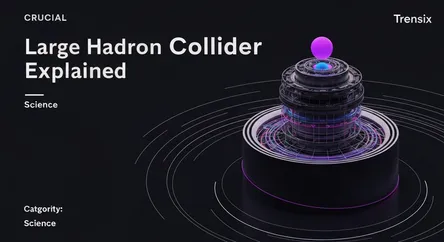Science
Large Hadron Collider Explained

A look into the world's most powerful particle accelerator, what it does, why it's trending, and how it impacts our everyday lives.
What is it?
The Large Hadron Collider (LHC) is the world's largest and most powerful particle accelerator. Operated by the European Organization for Nuclear Research (CERN), it's located in a 27-kilometer circular tunnel 100 meters underground on the Franco-Swiss border near Geneva. The LHC accelerates beams of particles, like protons, to near the speed of light in opposite directions and smashes them together. Scientists analyze the debris from these high-energy collisions to study the fundamental particles and forces that make up our universe, essentially recreating conditions that existed moments after the Big Bang.
Why is it trending?
The LHC consistently grabs headlines with its groundbreaking research. Its most famous discovery was the Higgs boson in 2012, the final missing piece of the Standard Model of particle physics. The machine is constantly undergoing upgrades to increase its power and precision. After a three-year shutdown, it restarted in 2022 for "Run 3" to study the Higgs boson in greater detail and search for new physics, including dark matter. There is also ongoing debate and planning for a potential successor, an even larger machine called the Future Circular Collider, which keeps the LHC at the forefront of scientific discussion.
How does it affect people?
Beyond expanding our fundamental understanding of the universe, the technology developed for the LHC has tangible benefits. In healthcare, particle accelerator technology derived from this research is used in hadron therapy to treat cancer and in advanced medical imaging like PET scans. The immense data-processing challenge of the LHC led to the development of the Worldwide LHC Computing Grid, a global supercomputer that has pushed the boundaries of big data analysis. Furthermore, detector and cryogenic technologies created for the LHC have found applications in fields ranging from aerospace to materials science.